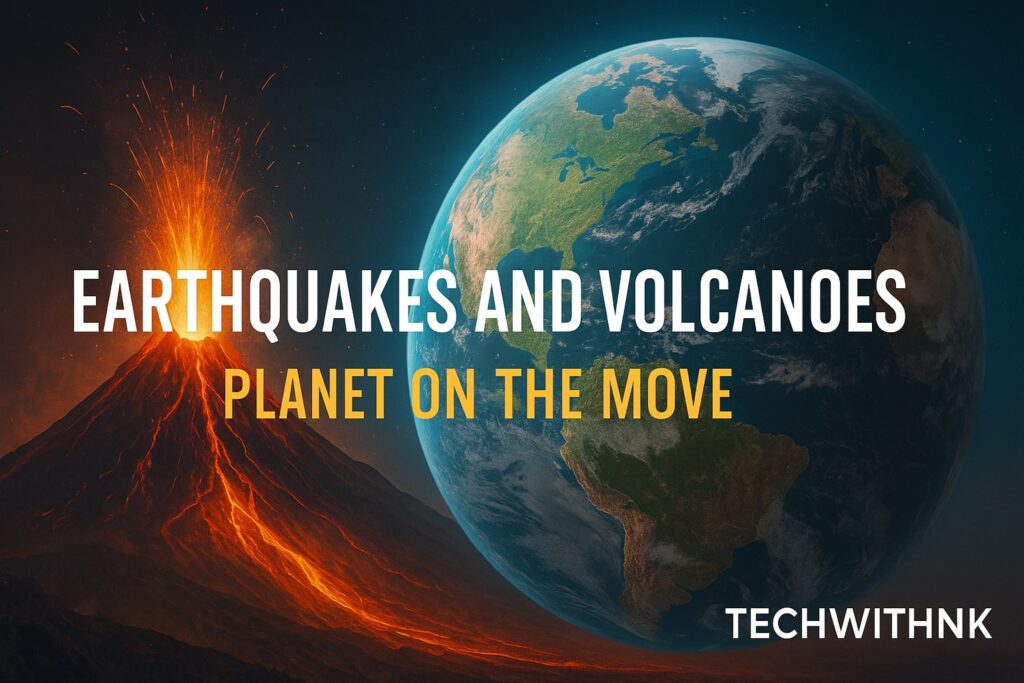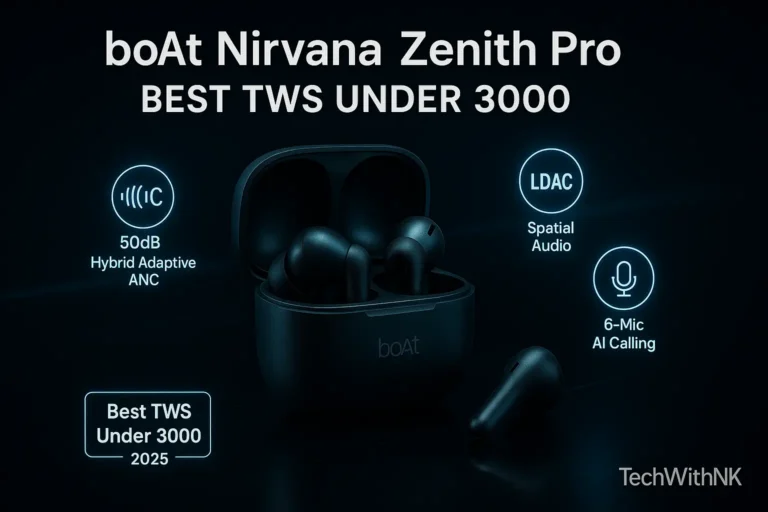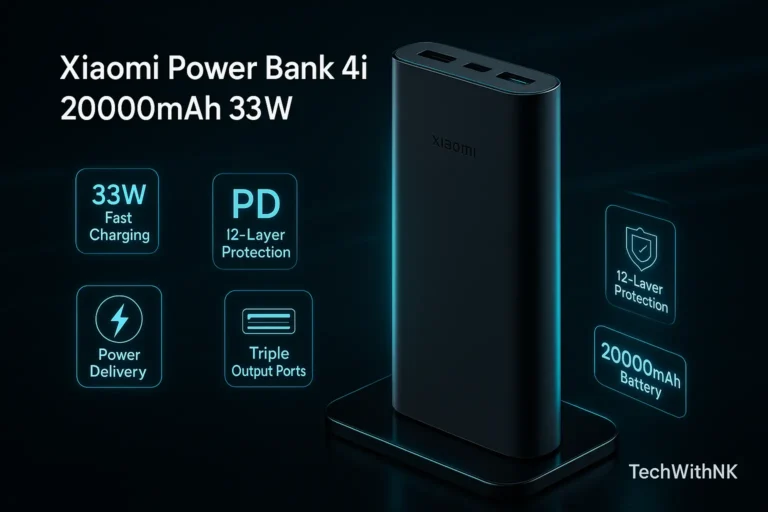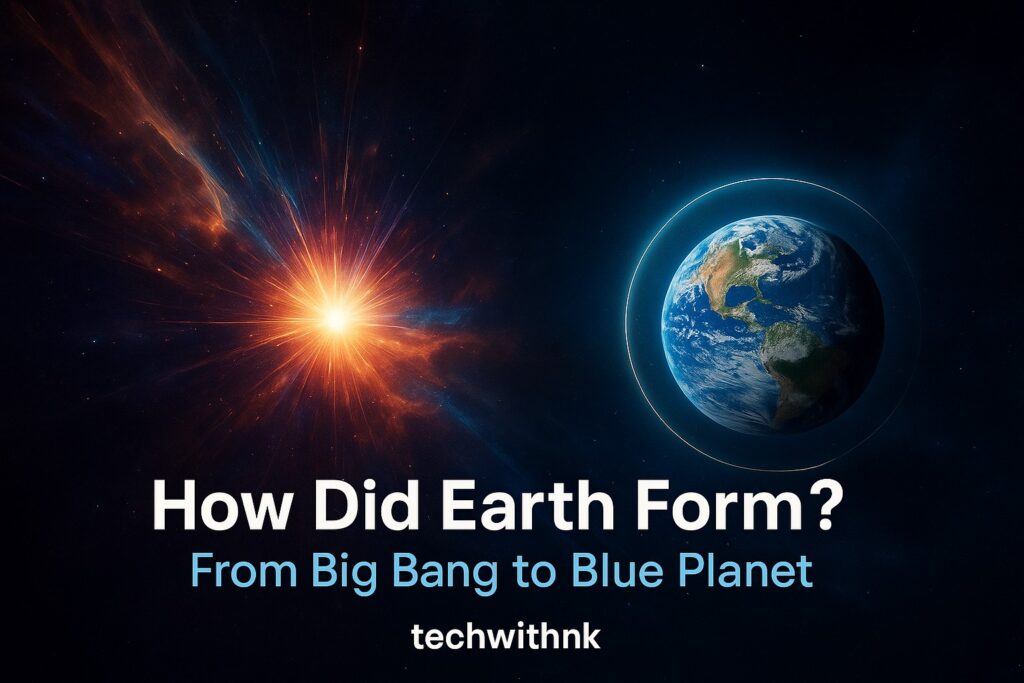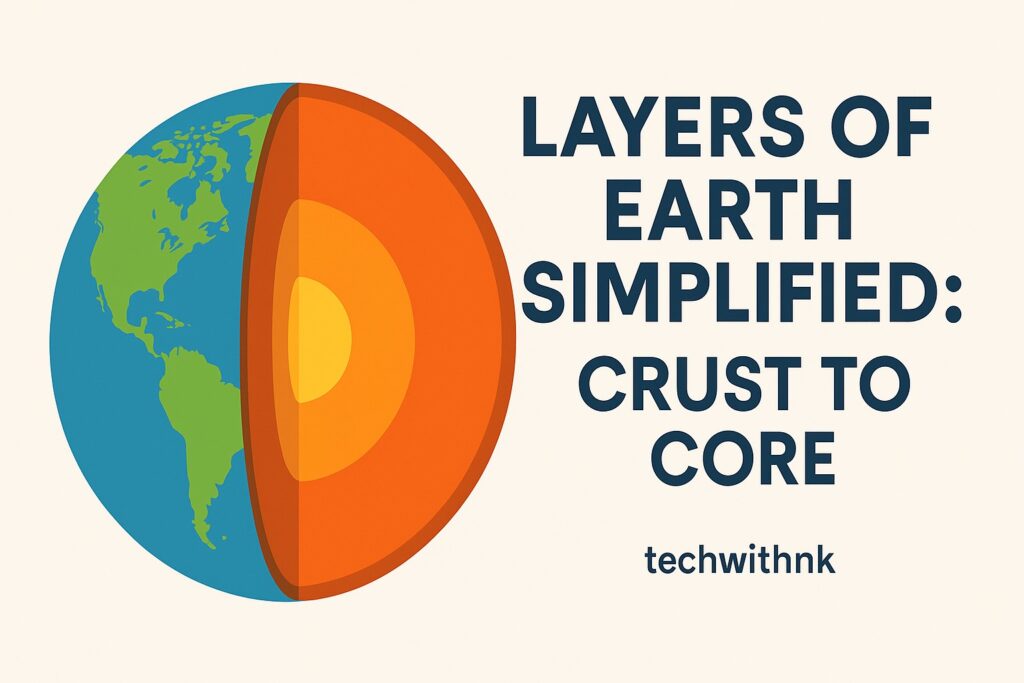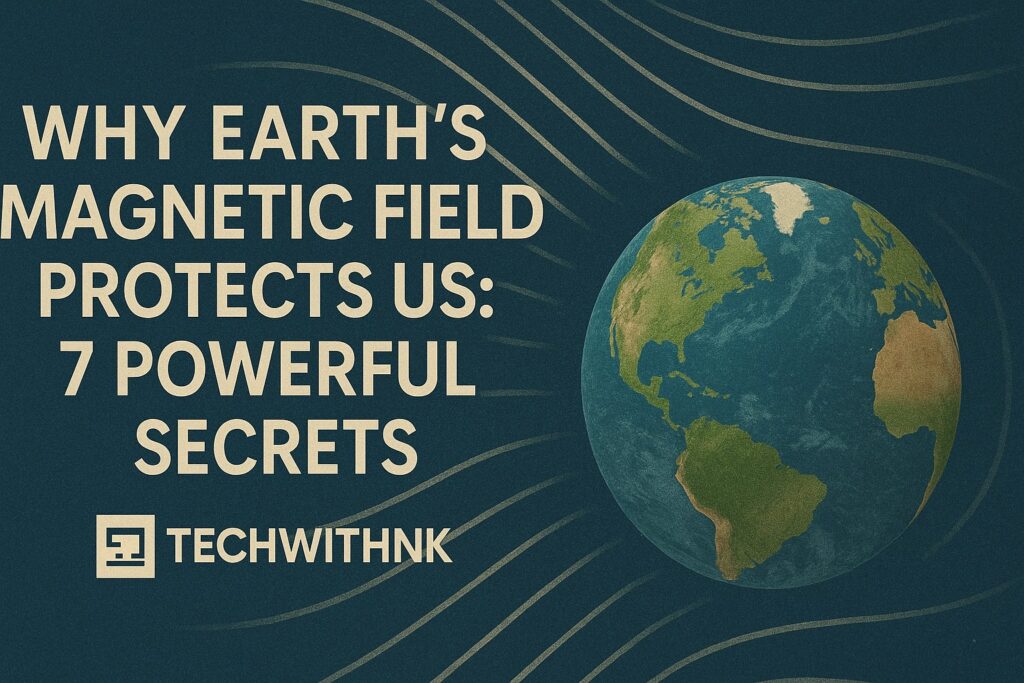Table of Contents
Toggle🌋 Introduction: Earth is Alive Beneath Our Feet
While our planet might feel solid and unmoving, deep beneath the Earth’s surface lies a dynamic, constantly shifting world. Earthquakes and volcanoes are two powerful expressions of this movement—shaking cities, shaping landscapes, and reminding us of Earth’s restless heart.
This article explores the inner forces that drive these phenomena, explains their origins, effects, and global patterns, and shows how science helps us prepare for these unpredictable natural events.
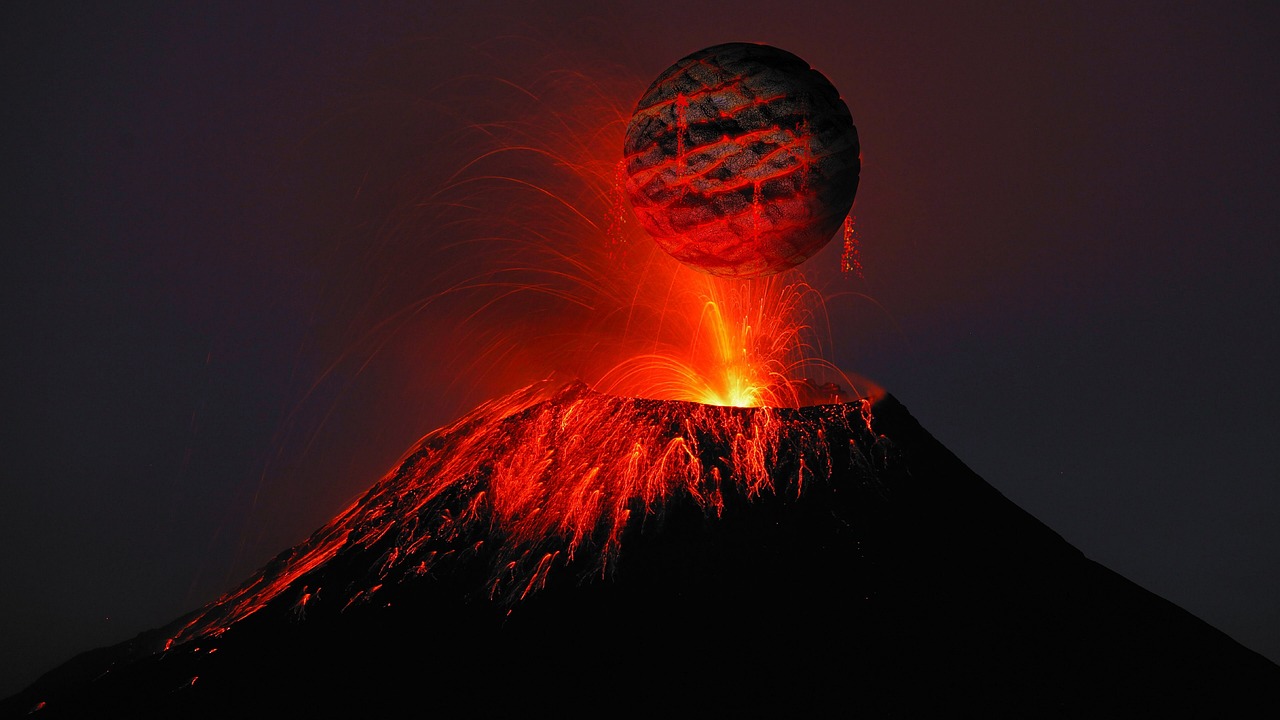
🧭 Earth’s Layers: The Driving Force Within
Understanding earthquakes and volcanoes begins with Earth’s structure. Our planet has four main layers:
Crust – The outermost layer, rigid and cool, where we live.
Mantle – The thick, hot layer beneath the crust made of semi-solid rock. Convection currents in the mantle drive plate movement.
Outer Core – A molten sea of iron and nickel, responsible for Earth’s magnetic field.
Inner Core – A dense, solid ball of iron and nickel under extreme pressure and heat.
The crust and the upper mantle form the lithosphere, which is broken into tectonic plates. These plates “float” on the softer asthenosphere and are the primary reason for earthquakes and volcanic activity.
🌐 What Are Tectonic Plates?
Tectonic plates are massive, rigid sections of Earth’s lithosphere. There are seven major and several minor plates, including:
Pacific Plate
North American Plate
Eurasian Plate
Indo-Australian Plate
African Plate
South American Plate
Antarctic Plate
These plates are constantly in motion—at rates of a few centimeters per year—similar to the rate fingernails grow. When they interact at plate boundaries, they create geological events such as earthquakes, volcanoes, and mountain formation.
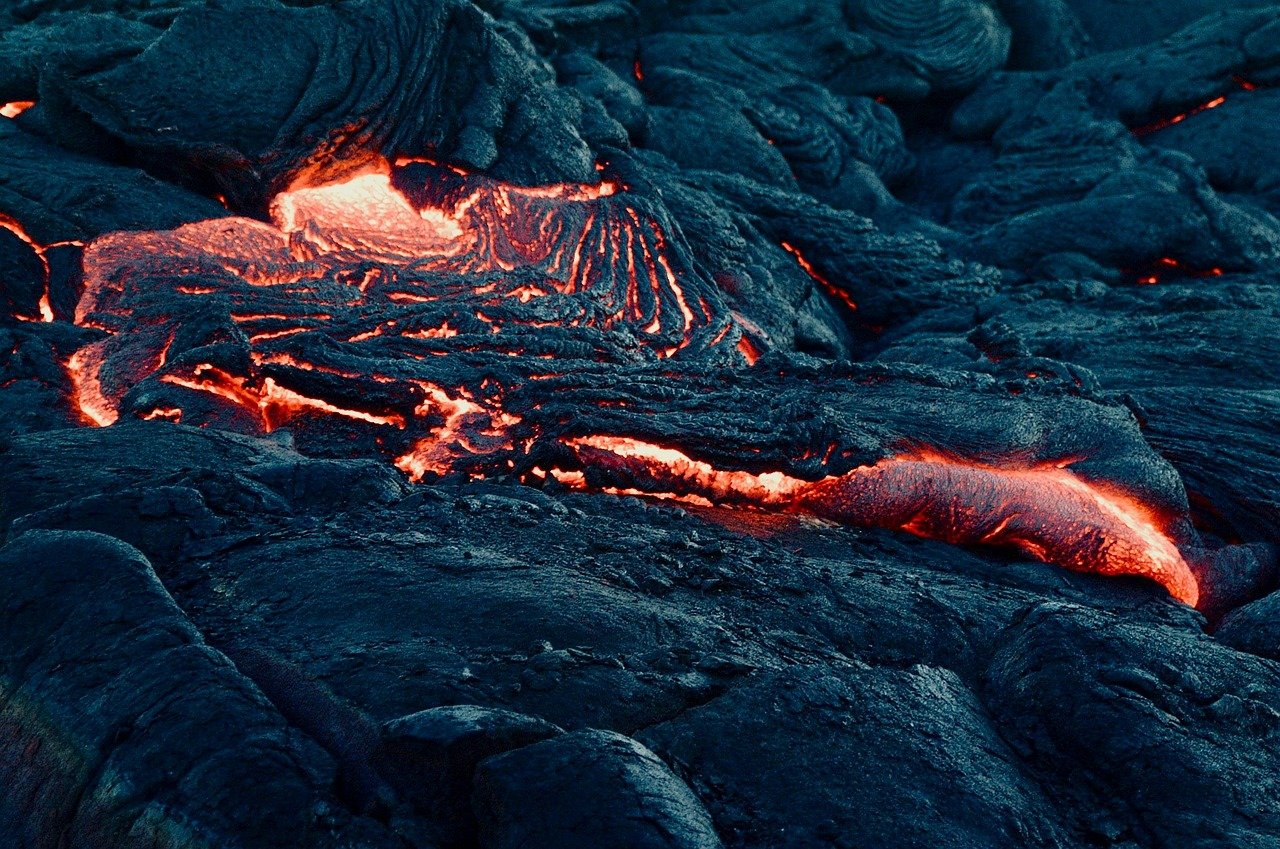
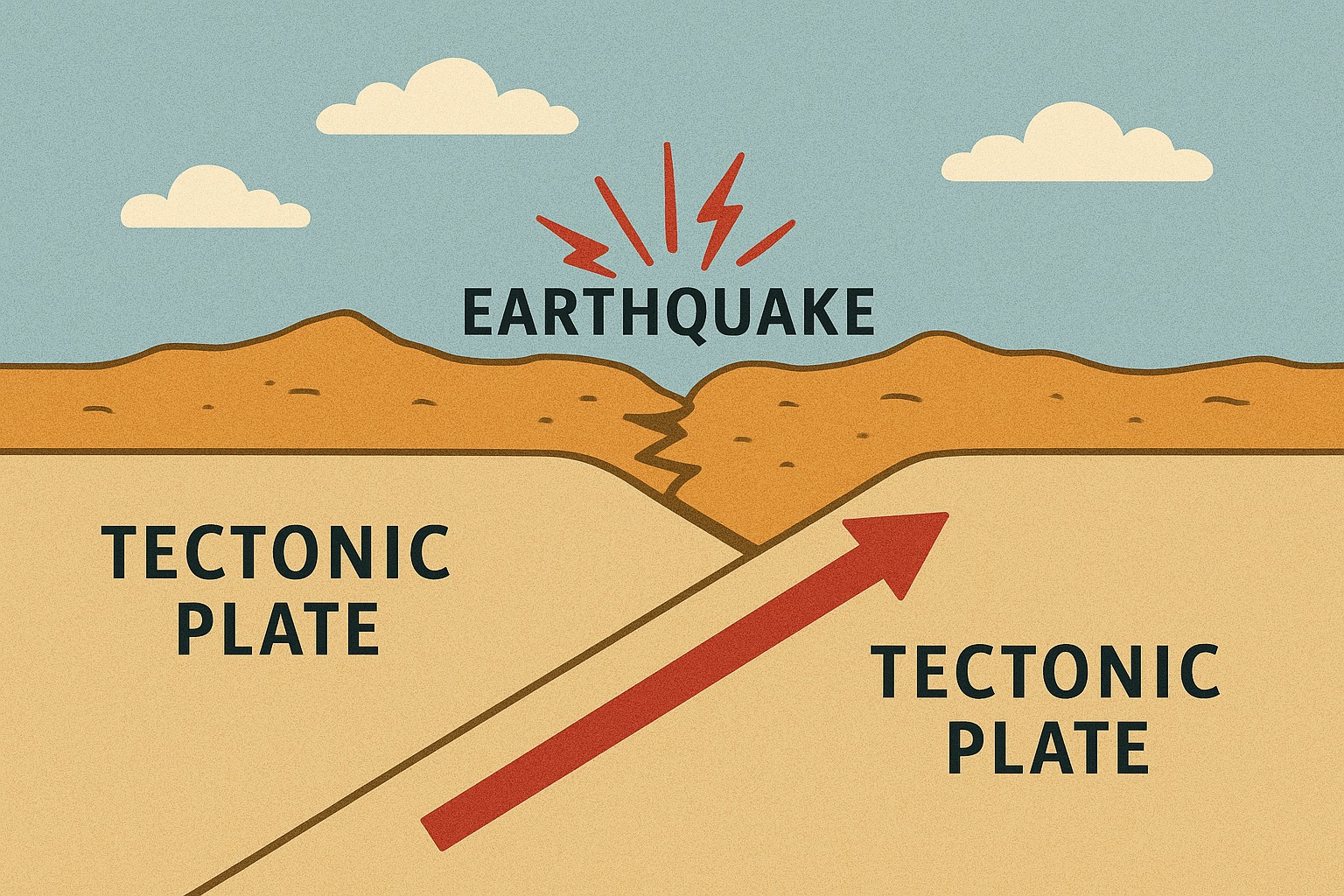
💥 Earthquakes: The Shaking Ground
🔹 What Is an Earthquake?
An earthquake is the sudden release of energy in Earth’s crust, causing seismic waves that shake the ground. This release happens when stress builds up at faults (cracks in the crust) and suddenly releases.
🔹 Causes of Earthquakes
Earthquakes mostly occur along fault lines where tectonic plates interact. Common types of faults include:
Normal Faults – Where the crust is being pulled apart
Reverse Faults – Where the crust is being pushed together
Strike-Slip Faults – Where plates slide past each other (e.g., San Andreas Fault)
Human-induced earthquakes, caused by mining, dam reservoirs, and fracking, are also increasing globally, but they are usually smaller in magnitude.
🔹 Types of Plate Boundaries and Their Impact
| Plate Boundary | Movement | Effect |
|---|---|---|
| Convergent | Plates collide | Mountain building, deep earthquakes, volcanoes |
| Divergent | Plates move apart | Rift valleys, shallow earthquakes, volcanic ridges |
| Transform | Plates slide past | Earthquakes (often strong and shallow) |
🌋 Volcanoes: Earth’s Vents
🔹 What Is a Volcano?
A volcano is an opening in Earth’s crust where magma (molten rock), gases, and ash escape from below the surface. When magma reaches the surface, it’s called lava.
🔹 Where Do Volcanoes Form?
Most volcanoes are found in three main settings:
Subduction Zones (Convergent Boundaries): One plate sinks beneath another, melts, and forms magma (e.g., Indonesia, Japan).
Rift Zones (Divergent Boundaries): Plates move apart, magma rises (e.g., Mid-Atlantic Ridge).
Hotspots: Stationary plumes of magma beneath the crust (e.g., Hawaii, Yellowstone).
🔁 Comparing Earthquakes and Volcanoes
| Feature | Earthquakes | Volcanoes |
|---|---|---|
| Trigger | Plate stress and rock rupture | Rising magma and gas pressure |
| Frequency | Millions per year (many unnoticed) | Few eruptions globally per year |
| Early Warning | Limited | Often possible (gas, heat, seismicity) |
| Impact Area | Large, radiating from epicenter | Localized but can have global effects |
| Predictability | Very difficult | Better, with monitoring systems |
🔬 The Science Behind It All
🔹 Seismic Waves
Earthquakes generate two main types of waves:
P-waves (Primary): Fastest, compressional waves
S-waves (Secondary): Slower, shearing waves
Seismographs record these waves to determine earthquake magnitude, epicenter, and depth.
🔹 Volcanic Eruption Mechanisms
Magma builds up in underground chambers. When gas pressure becomes too much for the rock to contain, it erupts violently or flows gently, depending on the magma type (basaltic = fluid, andesitic/rhyolitic = explosive).
📈 Recent Earthquake and Volcanic Events (2020–2024)
Turkey-Syria Earthquake (2023):
Magnitude: 7.8
Deaths: Over 50,000
One of the deadliest in modern history
La Palma Volcanic Eruption (2021):
Location: Canary Islands
Lava destroyed over 3,000 buildings
Iceland Volcano (2024):
Location: Reykjanes Peninsula
Continuous eruption for weeks
Indonesia (Ongoing):
High seismic and volcanic activity due to the Pacific Ring of Fire
🛡 Safety During Disasters
🔸 Earthquake Safety Tips
Before: Secure heavy items, prepare an emergency kit
During: Drop, Cover, and Hold On; stay away from glass
After: Check for gas leaks, avoid damaged structures
🔸 Volcano Safety Tips
Before: Know evacuation routes, monitor volcano alerts
During: Wear masks and goggles, stay indoors if ash is falling
After: Avoid river valleys (lahars), clear ash from roofs
🔭 The Ring of Fire: A Hotspot of Activity
The Pacific Ring of Fire is a horseshoe-shaped area surrounding the Pacific Ocean. It’s home to 75% of Earth’s volcanoes and 90% of all earthquakes. Countries like Japan, Chile, and the Philippines are most affected.
🌎 Why Earthquakes and Volcanoes Matter
Besides the immediate danger, these events:
Create New Land (e.g., volcanic islands)
Shape Landscapes (mountains, valleys)
Renew Soils (volcanic ash boosts fertility)
Provide Geothermal Energy (volcanic zones)
But they also:
Destroy homes and infrastructure
Trigger tsunamis and landslides
Displace millions of people
What’s the difference between the epicenter and the focus of an earthquake?
The focus is the point underground where the quake starts. The epicenter is the point on the surface directly above it.
Can volcanoes exist underwater?
Yes! Most volcanic activity occurs along mid-ocean ridges. Some form islands when eruptions break the surface (e.g., Iceland).bus leo.
What is liquefaction during an earthquake?
It’s when wet soil behaves like a liquid due to shaking, often causing buildings to sink or collapse.

